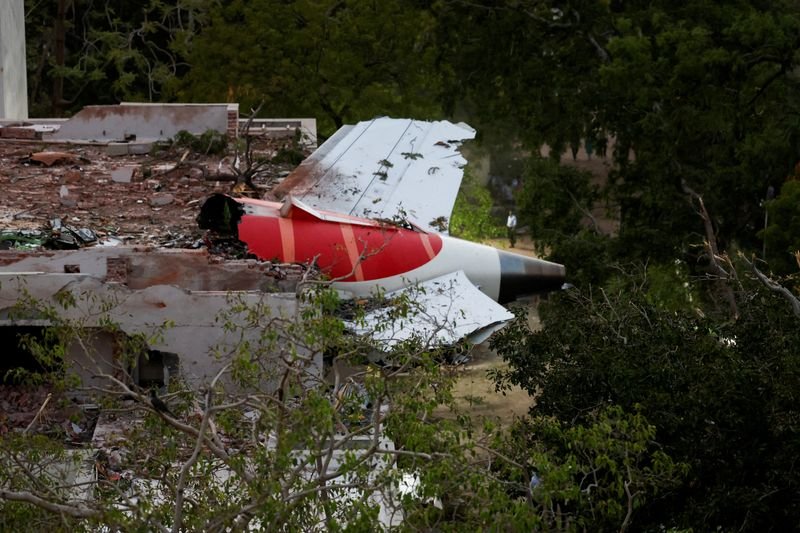Air India Crash Report Reveals Pilot Confusion Over Engine Switch Operation
An analysis of the recent Air India incident has surfaced critical insights regarding pilot operations during the flight. The report highlights a notable level of confusion among the flight crew concerning engine switch maneuvers. Understanding these aspects is crucial for enhancing safety and operational protocols in aviation.
Pilot Operations and Responsibilities
In the context of aviation, pilots are trained to manage various aircraft systems, particularly during emergency situations. This incident underscores the importance of clear communication and precise actions in high-stakes environments. Pilots must adhere to established procedures to navigate complex scenarios effectively.
The Incident Overview
The report provides a detailed account of the events leading up to the crash. In this case, critical miscommunication among the flight crew significantly contributed to the incident. It reveals that understanding technical systems is vital and further emphasizes the need for ongoing training.
Technical Analysis of Aircraft Systems
A thorough examination of the aircraft’s technical systems is essential to grasp how confusion can arise. The engine controls are intricate and require extensive knowledge and training. Pilots must have a comprehensive understanding of these systems to avoid misunderstandings during operation.
Engine Switch Functionality
The engine switches on an aircraft serve specific purposes and function as crucial interfaces for the pilots. Each switch is designed to activate or deactivate various engine functions. In this incident, a misinterpretation of these controls resulted in a cascade of errors that amplified the situation.
Importance of Training
Training programs for pilots must continually evolve to incorporate lessons learned from past incidents. Regular refresher courses and simulation training can enhance pilots’ skills, ensuring they stay abreast of new technology and procedures. This commitment to education is vital for maintaining high safety standards in aviation.
Human Factors in Aviation Safety
A significant aspect of the report is the examination of human factors that can influence pilot performance. Stress, fatigue, and even environmental conditions can impact decision-making in critical moments. Recognizing these elements is key to improving safety protocols.
Stress and Fatigue Management
Managing stress and fatigue is crucial for pilots. Implementing strategies such as effective workload management can help mitigate these challenges. Airlines must foster an environment that prioritizes pilot well-being to ensure optimal performance during flights.
Recommendations for Improvement
The crash report offers several recommendations aimed at preventing similar incidents in the future. These suggestions focus on enhancing communication among the flight crew and refining training programs to address gaps identified in the analysis.
Enhancing Communication
Establishing robust communication protocols is one of the most effective strategies to enhance flight safety. Pilots need to maintain clear lines of dialogue, especially during high-pressure situations. Regular training on communication techniques can help cultivate efficient teamwork in the cockpit.
Revising Training Programs
Airlines should consider revising their training programs to include additional focus on emergency procedures and aircraft systems. This revision must incorporate findings from recent incidents to create a more effective training framework. Simulation exercises can serve as a vital tool in preparing pilots for real-world scenarios.
The Role of Technology in Aviation Safety
Advancements in technology have transformed aviation safety and operations. Modern aircraft are equipped with sophisticated systems designed to minimize human error. However, technology alone is not enough; pilots must be adequately trained to utilize these systems effectively.
Automated Systems and Pilot Interactions
Automated systems are designed to assist pilots, but they can also introduce complexities. Understanding how to interact with these systems is essential, especially during emergencies. Continuous training on system operations can better prepare pilots for various scenarios.
Data Analysis for Future Improvements
Utilizing data analytics to review prior incidents can provide valuable insights. By analyzing patterns and trends, aviation authorities can identify areas for improvement and develop targeted strategies to enhance safety across the industry.
Regulatory Perspectives
Regulatory bodies play a significant role in establishing safety standards within aviation. The insights gleaned from the Air India crash report can prompt changes in regulatory frameworks, leading to improved safety measures across the sector.
Importance of Compliance
Compliance with safety regulations is non-negotiable in aviation. Airlines must adhere to established guidelines to safeguard passengers and crew. Regular audits and assessments can help ensure that operational practices align with regulatory standards.
Collaboration with Industry Stakeholders
Collaboration between airlines, regulatory bodies, and pilot organizations is crucial for fostering a culture of safety. Engaging in open dialogues can lead to the development of best practices that enhance overall aviation safety.
Conclusion
This comprehensive examination of the Air India crash report underscores the need for ongoing improvements in pilot training, communication, and the utilization of technology. By addressing these areas, the aviation industry can work towards preventing similar incidents and ensuring safer air travel for all.
